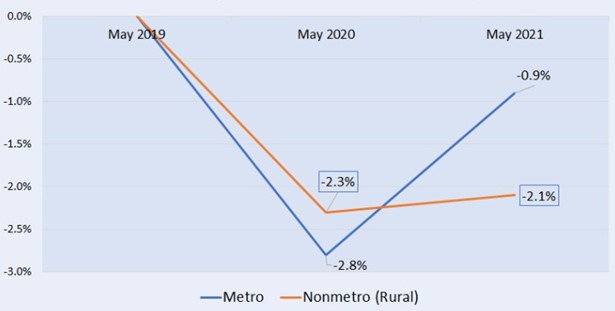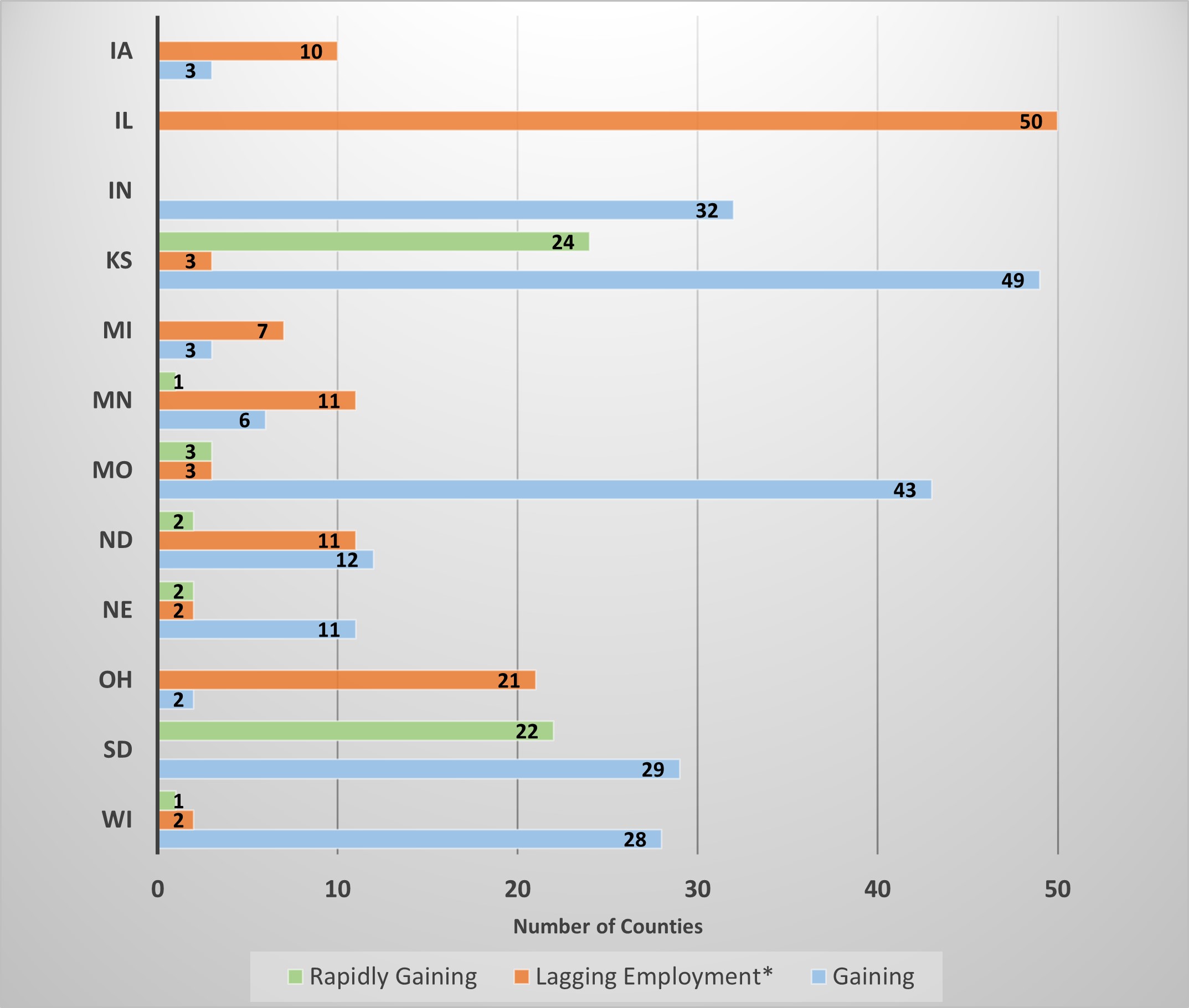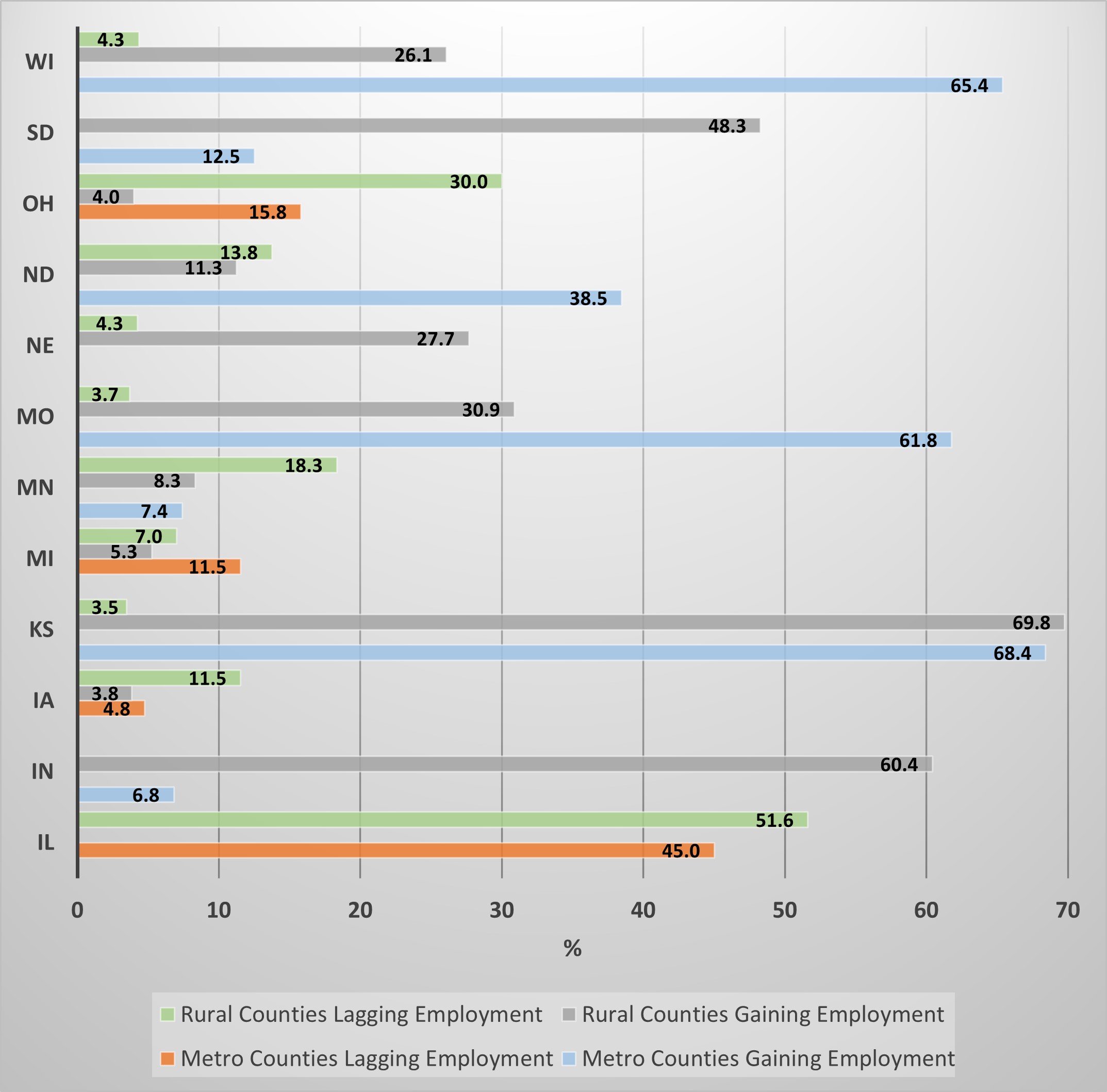
Rural counties added 1.3 million jobs between May 2020 and May 2021. However, in May 2021, rural employment was 2.2% lower than in May 2019. A similar situation occurs in metropolitan counties. From May 2020 to May 2021, metropolitan counties added around 13 million jobs. However, employment fell by 2.2% compared to May 2019, long before the Covid-19 pandemic began.[1]
Where do rural and metropolitan counties differ?
There was a major difference in how much the workforce responded to the pandemic. Between May 2019 and May 2020, the metropolitan labor market dropped by 2.8%, which is more than the rural labor market (2.3%). But the metropolitan labor force bounced back by 1.9% and reached the value of only 0.9% lower than in May 2019. On the contrary, the labor market in rural counties has recovered just by 0.2% in May 2021 and was 2.1% lower than in 2019 (Figure 1).[2]
Figure 1. Change in the metropolitan and rural labor force, May 2019 – 2021
 Source: The Daily Yonder, July 7, 2021
Source: The Daily Yonder, July 7, 2021
The labor market in North Central Region
The labor market in each of the North Central Region states changed differently between May 2019 and May 2021 (Figure 2). Most of Kansas, Indiana, Missouri, South Dakota, and Wisconsin counties seem to be bouncing back. For example, 77.3% of counties in South Dakota, 69.5% in Kansas, about 40% in Wisconsin and Missouri, and 34% in Indiana have been gaining employees. In contrast, employment in Illinois, Ohio, and Iowa, in particular, is lagging behind. In Iowa, 49% of counties have been losing the labor force compared to May 2019.
Figure 2. North Central Region’s counties gaining and losing employment between May 2019 and May 2021
 Source: U.S. Census Bureau Labor Statistics
Source: U.S. Census Bureau Labor Statistics
In rural counties, the size of the labor force differs (Figure 3). 69.8% of rural counties in Kansas, 60.4% in Indiana, 48.3% in South Dakota bounced back and experienced an increase in the labor force, while 51.6% rural counties in Illinois, 30% in Ohio, and 18.3% in Minnesota have been losing in employment. Metropolitan counties gain employment in Kansas (68.4% of urban counties), Wisconsin (65.4%), and Missouri (61.8%), in particular, while 45% of urban counties in Illinois lagging employment.
Figure 3. Change in labor force in North Central Region rural and urban counties between May 2019 and 2021
 Source: U.S. Census Bureau Labor Statistics
Source: U.S. Census Bureau Labor Statistics
The impacts of the difference between employment and the size of a labor force are twofold. First, as rural counties tend to have fewer people seeking employment, unemployment rates generally drop. Second, employers typically have a smaller labor market as well. Thus, due to the limited labor market, rural economies may continue to decline over time, resulting in rural outmigration and worsening quality of life in rural areas.
[1] The Daily Yonder: https://dailyyonder.com/rural-employment-grew-in-may-but-fewer-people-are-seeking-jobs/2021/07/07/
[2] Ibid.
Author: Zuzana Bednarikova, zbednari@purdue.edu
Dr. Zuzana Bednarikova is a Research and Extension Specialist at NCRCRD.
